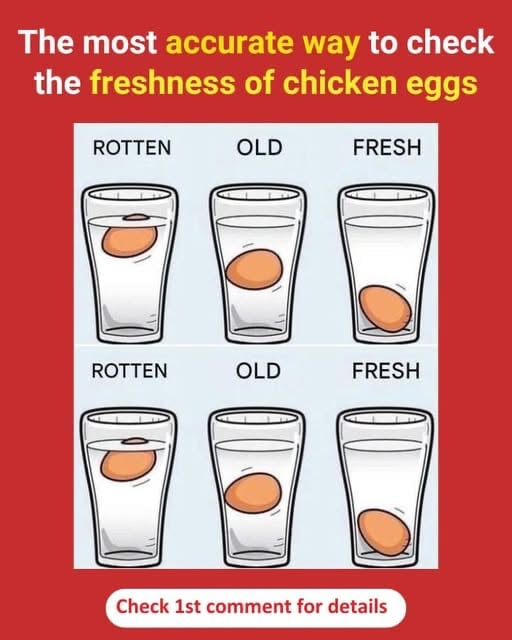
The Float Test: The Surprisingly Accurate Way to Check Egg Freshness
Let’s face it—nobody wants to crack open an egg only to be greeted by a sulfuric stench from the pits of breakfast hell. Whether you’re a Sunday brunch champion or just someone trying to avoid food poisoning, knowing if your eggs are fresh is a life skill worth having. And believe it or not, you don’t need fancy equipment or a chemistry degree to figure it out. All you need is a glass of water.
That’s right. According to generations of home cooks and even supported by the USDA, the float test is one of the most accurate and reliable ways to check the freshness of a chicken egg. Here’s how it works.
How the Float Test Works
Fill a glass with cold water and gently place the egg in it.
If the egg sinks and lies flat on the bottom, congrats! It’s fresh. Crack it open with confidence and make yourself a sunny-side-up.
If it sinks but stands upright, it’s still safe to eat, but you should use it soon—it’s considered “old,” probably a week or two away from its prime.
If it floats to the top, that egg is done for. Don’t argue, don’t sniff it, just toss it.
Why This Works (Yes, There’s Science!)
As eggs age, the liquid inside slowly evaporates through the porous shell, and air takes its place. The more air inside, the more buoyant the egg becomes. A fresh egg has very little air, so it sinks. An old egg has a bigger air pocket, so it starts to stand. A rotten egg has enough air to float—and probably enough bacteria to start a new civilization.
According to the USDA, eggs can last 3–5 weeks beyond the pack date if stored properly in the refrigerator at 40°F (4°C). But as they age, quality—not just safety—decreases. The whites get thinner, yolks flatten, and the flavor can change. So even if an egg passes the safety check, it might not give you that fluffy omelet you’re dreaming of.
Fun Fact: Eggs Don’t Expire as Fast as You Think
In the U.S., most eggs are washed before being sold, which removes their natural protective coating. That’s why refrigeration is crucial here. In some European countries, unwashed eggs can be stored at room temperature for weeks. But when in Rome—or Kansas—follow local practices.
Also, the “sell by” or “best by” date on the carton isn’t the final word. That date usually comes about 30 days after the packing date. The float test gives you a better clue than any printed label ever could.
Other Tricks for Egg Freshness (If You’re Curious)
The shake test: Gently shake the egg next to your ear. If you hear sloshing, it’s probably old. A fresh egg is more solid.
The sniff test: Crack it open and give it a whiff. Fresh eggs don’t smell like much; rotten ones smell like bad decisions.
The appearance test: A fresh yolk is round and firm; the whites are thick and don’t spread much. Older eggs have runnier whites and flatter yolks.
The Bottom Line
The float test is easy, accurate, and requires nothing more than a glass of water and a little common sense. It’s the kind of kitchen hack that even your grandma would approve of. So next time you find a mystery egg in the back of the fridge and wonder, “Should I risk it?”—just float it.
Because when it comes to eggs, it’s better to float first than regret later.